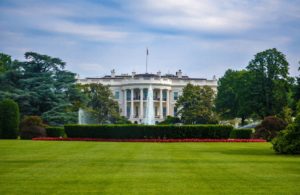 Media coverage and public reaction to the slate of Democratic candidates for the 2020 presidential election offer a window into a core double bind for women—gendered perceptions of age that women face as they compete for advancement. A double bind is a term describing a situation where a person is caught between two irreconcilable demands or expectations. Jill Filipovic of the New York Times describes the age-based double bind for women represented by the excitement generated by the younger men running for president. She notes that in the world of work, research shows that women are promoted once managers see them perform well, while men are promoted if managers believe in their potential or promise. In other words, women have to prove themselves and men don’t. Filipovic observes that these same beliefs and practices are being played out now in politics.
Media coverage and public reaction to the slate of Democratic candidates for the 2020 presidential election offer a window into a core double bind for women—gendered perceptions of age that women face as they compete for advancement. A double bind is a term describing a situation where a person is caught between two irreconcilable demands or expectations. Jill Filipovic of the New York Times describes the age-based double bind for women represented by the excitement generated by the younger men running for president. She notes that in the world of work, research shows that women are promoted once managers see them perform well, while men are promoted if managers believe in their potential or promise. In other words, women have to prove themselves and men don’t. Filipovic observes that these same beliefs and practices are being played out now in politics.
The age range of the 2020 Democratic candidates is quite large: from 37 to 78 years of age. Filipovic notes that being between 37 and 46 years old and relatively unknown seems to be an advantage for the Democratic men who are generating excitement for being fresh faces and young, but for the women, “unfamiliarity and youth end up being tied to incompetence.” As in the workplace, the young men in the race are generating excitement without having accomplished nearly as much as the older women in the race:
- Pete Buttigieg, at 37, is the mayor of South Bend, Indiana; Beto O’Rourke, 46, is the Texas congressman who lost a Senate race to Ted Cruz; Andrew Yang, 44, is a corporate lawyer turned entrepreneur; and Tim Ryan, 45, is known as the congressman who challenged Nancy Pelosi for the speaker role.
- In contrast, the women in the race, who are in their 50s and 60s, had to prove themselves first. They entered politics later in life after spending years building up accomplishments and legislative and executive experience and recognition to be considered credible. But they are no longer considered “fresh” or exciting by the public or media.
In fact, Filipovic points out, age poses an unsolvable problem for women. She notes that “they are seen as too young and inexperienced right up until the time they are branded too old and tedious,” as is the case for Elizabeth Warren. In her late 60s, she is portrayed in the media as old, along with Bernie Sanders and Joe Biden, although she is ten years younger than they are. Men running for president in 2020 who are more or less the same age as Warren—Sherrod Brown (66), John Hickenlooper (67), and Jay Inslee (68)—are not lumped in with the white-haired candidates.
Filipovic notes that women in their 40s are seen as in a hurry, too ambitious and unwilling to pay their dues; women in their 50s are seen as old news; and women in their 60s are seen as old. She asks, “When, exactly, is a woman supposed to go to the White House?” That is the question that we must keep asking.
Photo by David Everett Strickler on Unsplash